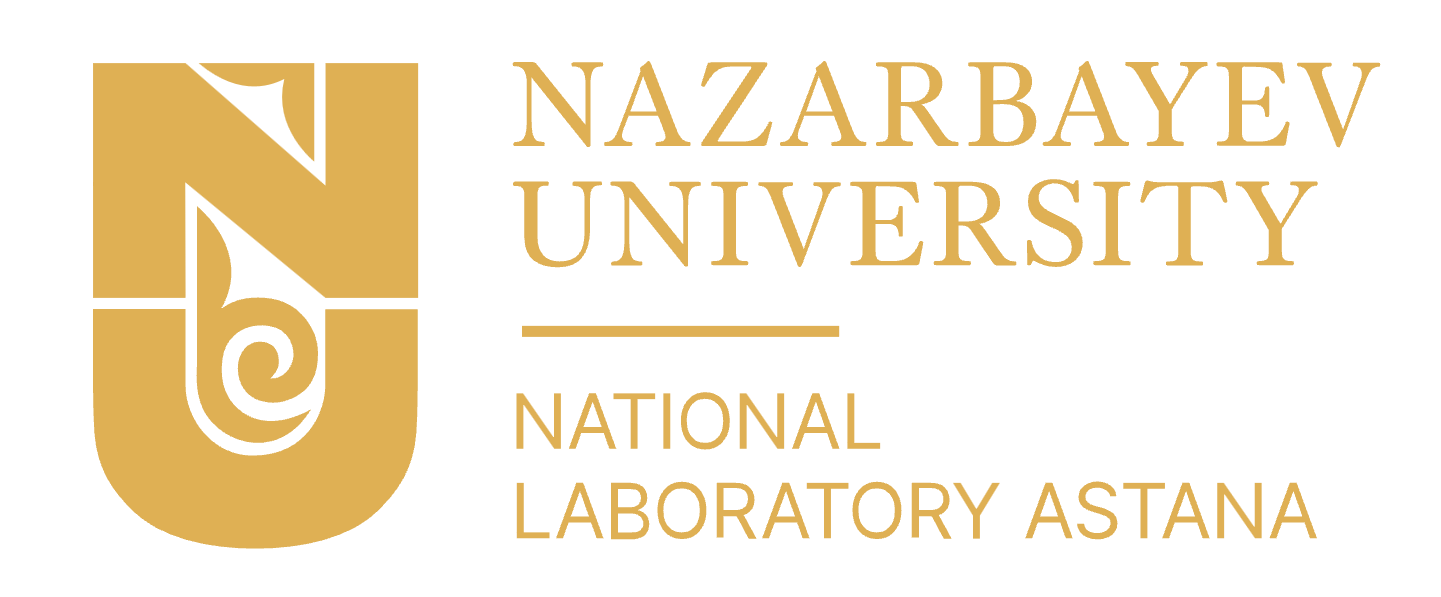Advancement of the Green Energy: Foundational Research of Solar Fuel Technologies for Sustainable Production and Advanced Storage
BR21882439
The Targeted Funding Program (TFP) is a strategic national initiative aimed at accelerating Kazakhstan's transition to green energy. It directly contributes to the United Nations Sustainable Development Goals:
- Goal 7: Affordable and Clean Energy – increasing the global share of renewable energy
- Goal 13: Climate Action – promoting decarbonization and sustainable technologies
Kazakhstan's abundant solar radiation and commitment to carbon neutrality by 2060 (as outlined in the Kazakhstan-2050 strategy) make it an ideal environment for advancing solar hydrogen technologies.
The main objective of the program is to investigate and develop novel materials and systems for:
- Renewable energy (hydrogen) generation through photocatalytic water splitting
- Efficient and compact solid-state hydrogen gas storage
- Clean production of ammonia
By the end of the program, we aim to achieve:
- Efficient heterostructured photocatalysts via internal electric field engineering
- High-performance semiconductors with tunable bandgaps
- Upconversion systems for capturing IR and converting to visible/UV light
- Composite alanate and titanium-based hydrides with improved storage capacity and release kinetics
- Green catalysts for ammonia synthesis
- Developed electrochemical synthesis of Bi2S3 with record photocurrent among pure materials
- Demonstrated influence of p-n junctions in ZnO/Co3O4 photocatalysts on charge separation
- Synthesized CuBi2O4 and CuFeO2 thin films via pulsed electrochemical deposition with tunable metal ratios enabling control over Fermi level and formation of homojunctions
- Produced composite alanates with carbon nanotubes to enhance hydrogen sorption
- Surface-modified titanium alloys for reduced oxidation and enhanced hydrogen uptake
- Demonstrated IR-to-visible upconversion to improve solar utilization efficiency
(1) Photocatalytic water splitting using advanced semiconductors
(2) Study of internal electric fields and charge separation
(4) Encapsulation in MOF/CNT frameworks for improved kinetics and safety
(6) Employs doping and surface functionalization to boost selectivity and efficiency.
(7) Enhances nitrogen adsorption and activation for efficient NH3 production.







- Nurxat NurajeProfessor, Principal InvestigatorORCID: 0000-0002-4335-8905
Researcher ID: ACQ-7356-2022
Scopus ID: 8672602200 - Dr. Vladislav KudryashovSenior Researcher, NLAScopus ID: 57196782106
Researcher ID: C-1411-2015
ORCID: 0000-0002-5667-611X - Dr. Khadichakhan RafikovaAssociate Professor, Satbayev UniversityScopus ID: 56050765000
ORCID: 0000-0001-8028-2244
ResearcherID: AAF-5319-2019 - Dr. Olzat ToktarbaiulySenior Researcher, NLAScopus Author ID: 55509723300,
ORCID: 0000-0003-4594-3435
ResearcherID: ADV-5698-2022 - Dr. Aitkazy KaishaSenior Researcher, NLAScopus Author ID: 57210920713,
ORCID ID: 0000-0001-7203-9842
ResearcherID: AGM-0096-2022 - Dr. Yerbolat MagazovResearcher, NLAScopus ID: 59227515200
ORCID: 0000-0002-0902-3140
Researcher ID: AAW-7243-2020 - Dr. Dana KanzhigitovaResearcher, NLAORCID: 0000-0003-3445-584X
Researcher ID: ABG-4327-2021
Scopus ID: 57827998200 - Dr. Guldana ZhigerbayevaResearcher, NLAScopus ID: 57828130900
ORCID: 0000-0001-8556-4865
Researcher ID: IYJ-5518-2023 - Aliya KurbanovaJunior Researcher, Nazarbayev UniversityScopus ID: 57208865374
ORCID: 0000-0002-1261-4582
Researcher ID: JGZ-7602-2023 - Magzhan AmzeJunior Researcher, NLAScopus ID: 57439684700
ORCID: 0000-0003-4075-1522
Researcher ID: KAU-8542-2024 - Azat MahmetJunior Researcher, NLA
- Arshyn ZhengisJunior Researcher, NLA
- Zhanat AzhikhanovaJunior Researcher, NLA
- Raushan SoltanResearch Assistant, NLA
- Botakoz SuleimenovaResearch Assistant, NLA
- Aigerim OspanovaResearch Assistant, NLA
- Madina KalibekResearch Assistant, NLA
- Talgat OrazbekResearch Assistant, NLA
- Magazov, Y., Kudryashov, V., Moldabekov, K., Amze, M., Nurmanova, A., Aliyev, A., & Nuraje, N. (2024). Copper oxide coupled with photon upconversion for solar water splitting. Communications Materials, 5(1), 126. https://doi.org/10.1038/s43246-024-00574-5
- Magazov, Y., Aliyev, A., Moldabekov, K., Kurbanova, A., Rakymbekova, A., Amze, M., Ibrayev, N. & Kudryashov, V. (2024). Photoelectrochemical water splitting using Cu2O-based photocathode – A review. ES Energy & Environment, 26, 1347. https://doi.org/10.30919/esee1347
- Qi H, Tong Y, Wang Y, et al. Strongly Anchored Dion–Jacobson Perovskite for Efficient Blue Light-Emitting Diodes. Nano Lett. 2025;25(1):353-360. https://doi.org/10.1021/acs.nanolett.4c05124
- Adotey E, Kurbanova A, Ospanova A, et al. Development of Superhydrophobic Reduced Graphene Oxide (rGO) for Potential Applications in Advanced Materials. Nanomaterials. 2025;15(5). https://doi.org/10.3390/nano15050363
- Kaisha A, Toktarbaiuly O, Ainabayev A, et al. Role of Invisible Oxygen in the Trilayer Laminates of Ultrathin a-IGZO/SiOx/a-IGZO Films. ACS Appl Electron Mater. https://doi.org/10.1021/acsaelm.5c00433
- Kalibek MR, Ospanova AD, Suleimenova B, et al. Solid-state hydrogen storage materials. Discover Nano. 2024;19(1). https://doi.org/10.1186/s11671-024-04137-y
- Suiindik Z, Adotey E, Kydyrbay N, Zhazitov M, Nuraje N, Toktarbaiuly O. Formulating Superhydrophobic Coatings with Silane for Microfiber Applications. Eurasian Chemico-Technological Journal. 2024;26(2):53-60. https://doi.org/10.18321/ectj1607
- Kydyrbay N, Adotey E, Zhazitov M, et al. Enhancing Road Durability and Safety: A Study on Silica-Based Superhydrophobic Coating for Cement Surfaces in Road Construction. Engineered Science. https://doi.org/10.30919/es1221
- NKh I, YZh T. ENHANCEMENT OF POWER CONVERSION EFFICIENCY OF DYE-SENSITIZED SOLAR CELLS VIA INCORPORATION OF GAN SEMICONDUCTOR MATERIAL SYNTHESIZED IN HOT-WALL CHEMICAL VAPOR DEPOSITION FURNACE. Eurasian Physical Technical Journal. 2024;21(50). https://doi.org/10.31489/2024No3/131-139
- Ardakkyzy A, Nuraje N, Toktarbay Zh. Effects of Electrospinning Parameters on the Morphology of Electrospun Fibers. Eurasian Chemico-Technological Journal. 2024;26(3):105-111. https://doi.org/10.18321/ectj1634
- Imekova G, Karimov D, Nuraje N, Toktarbay Z. Polymerization Dynamics of Zwitterionic Monomers with Polyacrylamide for Enhanced Oil Recovery. Engineered Science. 2024;31. https://doi.org/10.30919/es1260
- Ospanova A, Kassym K, Kanzhigitova D, et al. Selective Separation of Thiophene Derivatives Using Metal–Organic Frameworks-Based Membranes. ACS Omega. https://doi.org/10.1021/acsomega.4c05506
- Yeszhan Y, Duisenbekov S, Kurmangaliyeva D, et al. Enhanced electrochemical performance of a polyaniline-based supercapacitor by a bicontinuous microemulsion nanoreactor approach. RSC Adv. 2025;15(2):1205-1211. https://doi.org/10.1039/D4RA07348G
- Amrenova Y, Zhengis A, Yergesheva A, Abutalip M, Nuraje N. Preparation of Zwitterionic Sulfobetaines and Study of Their Thermal Properties and Nanostructured Self-Assembling Features. Nanomaterials. 2025;15(1). https://doi.org/10.3390/nano15010058
- Zhigerbayeva G, Aliyev A, Magazov Y, Kudryashov V, Adilov S, Nuraje N. Efficient template free polymerization of continuously porous hybrid conducting polymers for highly stable flexible micro pseudocapacitors. Sci Rep. 2025;15(1):9577. https://doi.org/10.1038/s41598-025-93663-5
- Alipuly M, Kanzhigitova D, Bexeitova A, et al. Stable conductive PANI-based hydrogels with antibacterial activity. Adv Compos Hybrid Mater. 2025;8(1). https://doi.org/10.1007/s42114-024-01110-2
- Askar P, Kanzhigitova D, Ospanova A, et al. 1 ppm-detectable hydrogen gas sensor based on nanostructured polyaniline. Sci Rep. 2024;14(1):26984. https://doi.org/10.1038/s41598-024-77083-5Q.F.
- Gillani, Q., Askar, P., Ospanova, A., Jamali, M., & Nuraje, N. (2024). Vapor-Liquid-Liquid Equilibrium of Methanol, Cyclohexane, and Hexane Systems at 0.1 MPa: Binary and Ternary Phase Behavior Analysis. Eurasian Chemico-Technological Journal, 26(4), 211–224. https://doi.org/10.18321/ectj1645
- Xu X, Labidi A, Luo T, et al. In situ fabrication of TiO2 nanoparticles/2D porphyrin metal–organic frameworks for enhancing the photoreduction of CO2 to CO. J Mater Chem A Mater. https://doi.org/10.1039/D5TA00809C
- Seliverstova E, Serikov T, Sadykova A, Ibrayev N, Nuraje N. Enhanced photocatalytic properties of TiO2/rGO nanocomposites Doped with CdS. Mater Lett. 2025;379. https://doi.org/10.1016/j.matlet.2024.137660
- Seliverstova E, Serikov T, Nuraje N, Ibrayev N, Sadykova A, Amze M. Plasmonic effect of metal nanoparticles on the photocatalytic properties of TiO2/rGO composite. Nanotechnology. 2024;35(32). https://doi.org/10.1088/1361-6528/ad3e02
- Markhabayeva, A. A., Dupre, R., Nemkayeva, R., & Nuraje, N. (2023). Synthesis of hierarchical WO3 microspheres for photoelectrochemical water splitting application. Physical Sciences and Technology, 10(3-4), 33-39. https://doi.org/10.26577/phst.2023.v10.i2.04
- Askar, P., Kanzhigitova, D., Tapkharov, A., Umbetova, K., Duisenbekov, S., Adilov, S., & Nuraje, N. (2025). Hydrogen sensors based on polyaniline and its hybrid materials: a mini review. Discover Nano, 20(1), 68. https://doi.org/10.1186/s11671-025-04231-9
- Duisebayev, T., Abdullah, M., Tezekbay, Y., Zhazitov, M., Kydyrbay, N., Nuraje, N., & Toktarbaiuly, O. (2025). Hydrothermal Synthesis and Photocatalytic Performance of Zinc Oxysulfide for Hydrogen Evolution. Engineered Science, 34, 1460. https://doi.org/10.30919/es1460
- Zhazitov, M., Abdullah, M., Kydyrbay, N., Adotey, E., Toktarbay, Z., Duisebayev, T., Tezekbay, Y., Nuraje, N., & Toktarbaiuly, O. (2025). Fabrication of mechanically resistant ZnO-based superhydrophobic material for enhanced concrete applications. Case Studies in Construction Materials, 22, e04655. https://doi.org/10.1016/j.cscm.2025.e04655
- Magazov, Y., Kudryashov, V., Asmatulu, D. D., & Nuraje, N. (2025). Chapter 17 - Nanotechnology safety in solar energy industry. In R. Asmatulu, W. S. Khan, & E. Asmatulu (Eds.), Nanotechnology Safety (Second Edition) (pp. 321–333). Elsevier. https://doi.org/https://doi.org/10.1016/B978-0-443-15904-6.00019-8
- Megbenu, H. K., Gou, J., Zhuge, J., Rakhatkyzy, M., Shaimardan, M., & Nuraje, N. (2025). Chapter 12 - Nanotechnology safety in the marine industry. In R. Asmatulu, W. S. Khan, & E. Asmatulu (Eds.), Nanotechnology Safety (Second Edition) (pp. 229–249). Elsevier. https://doi.org/https://doi.org/10.1016/B978-0-443-15904-6.00011-3
- Toktarbaiuly, O., Adotey, E., Kaisha, A., Kydyrbay, N., Asmatulu, R., & Nuraje, N. (2025). Chapter 16 - Nanotechnology safety in semiconductor industry. In R. Asmatulu, W. S. Khan, & E. Asmatulu (Eds.), Nanotechnology Safety (Second Edition) (pp. 311–320). Elsevier. https://doi.org/https://doi.org/10.1016/B978-0-443-15904-6.00014-9
- Zhazitov, M., Abdullah, M., Kydyrbay, N., Adotey, E., Toktarbay, Z., Duisebayev, T., Tezekbay, Y., Nuraje, N., & Toktarbaiuly, O. (2025). Fabrication of mechanically resistant ZnO-based superhydrophobic material for enhanced concrete applications. Case Studies in Construction Materials, 22, e04655. https://doi.org/https://doi.org/10.1016/j.cscm.2025.e04655
Reduction of greenhouse gas emissions by replacing fossil-fuel-based processes with solar-driven alternatives.
Contribution to global efforts in carbon neutrality and sustainable energy development.
Strengthens the foundation for future green hydrogen export markets and domestic energy independence.
Public awareness campaigns to promote the role of science in tackling climate challenges.
Positions the country as a regional leader in green energy research and application.

